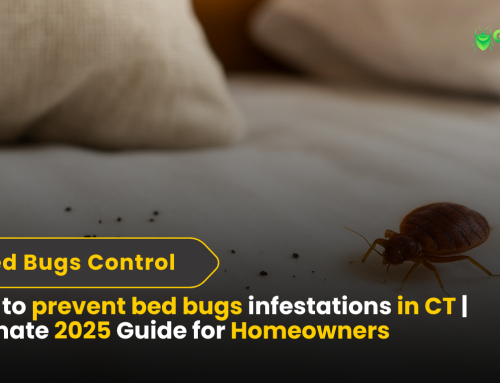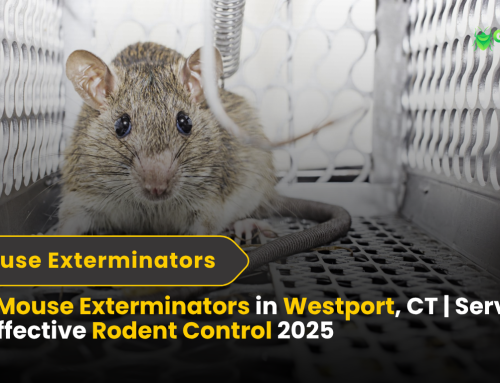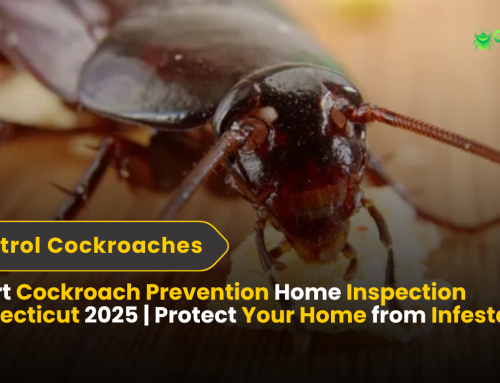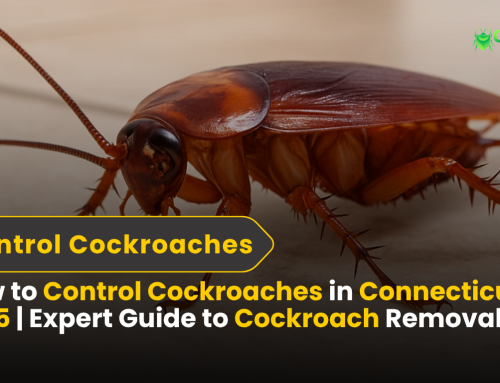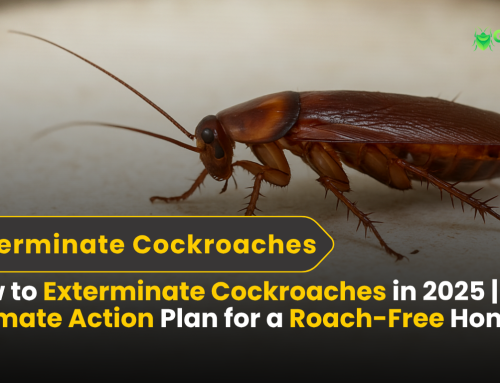Types of Wasp in Connecticut: A 2025 Identification Guide
If you’ve noticed buzzing insects around your Connecticut yard, you’re likely dealing with wasps, which range from harmless to highly aggressive. Identifying the exact Types of Wasps in Connecticut is crucial not only for home safety but also for protecting your family, pets, and outdoor activities.
From Eastern Yellowjackets nesting in the ground to Paper Wasps under porch eaves and Bald-faced Hornets in trees, each species behaves differently and requires unique precautions. This guide breaks down the most common types of wasp in Connecticut, how to recognise them, and practical strategies to prevent stings and manage nests safely.
What Types of Wasp in Connecticut?
Connecticut hosts a variety of wasp species, each with distinct physical traits, nesting habits, and aggression levels. Knowing which wasp you’re dealing with determines the safest response.
Most Common Species in Connecticut
-
Eastern Yellowjacket (Vespula maculifrons)
- Bright black-and-yellow stripes, often confused with bees.
- Extremely territorial and aggressive when nests are disturbed.
- Commonly build nests underground, in wall voids, or near trash bins.
- Peak activity in late summer, when colonies are largest.
-
Paper Wasps (Polistes spp.)
- Slender bodies, reddish-brown or yellow markings, and long legs that dangle in flight.
- Nests look like upside-down umbrellas, often found under eaves, porches, or shrubs.
- Mildly aggressive — usually only sting if the nest is threatened.
-
Bald-faced Hornets (Dolichovespula maculata)
- Larger than Yellowjackets, black with bold white facial markings.
- Build large, round, gray paper nests in trees, shrubs, or high structures.
- Highly protective of their colonies and quick to swarm intruders.
Less Common but Notable Species
- Mud Daubers – Solitary wasps, non-aggressive, build mud tube nests on walls or sheds. Beneficial for pest control since they prey on spiders.
- Cicada Killers – Large (up to 2 inches), intimidating but not aggressive. They burrow into sandy soil and hunt cicadas.
- European Hornets – Rare but present in Connecticut. Larger than Bald-faced Hornets, reddish-brown with yellow stripes. Aggressive if disturbed, and sometimes invade attics or wall voids.
How to Identify Wasps in Your Yard
Identification requires observing body features, nest type, and behavior.
Quick Identification Tips:
- Body Color & Patterns: Yellowjackets = bright stripes; Bald-faced Hornets = black-and-white; Paper Wasps = reddish-brown with slender shape.
- Size & Shape: Hornets are larger and bulkier than Yellowjackets; Paper Wasps are thin and long-legged.
- Nest Type:
- Underground holes → Yellowjackets
- Umbrella-shaped under eaves → Paper Wasps
- Large hanging gray spheres → Bald-faced Hornets
- Mud tubes → Mud Daubers
- Behavior:
- Aggressive swarming = Hornets/Yellowjackets
- Calm unless disturbed = Paper Wasps
- Solitary & non-aggressive = Mud Daubers, Cicada Killers
Checklist for Fast ID:
- Check body colour and striping.
- Note leg length and wing position.
- Identify nest type and location.
- Observe flight pattern (dangling legs = Paper Wasp).
- Consider season (late summer = most aggressive).
Understanding Wasp Behaviour in Connecticut
Wasps follow predictable seasonal and social patterns.
- Colony Social Structure: Yellowjackets & Hornets are social with thousands of workers; Paper Wasps form smaller colonies.
- Life Cycle:
- Spring: Queens emerge from hibernation and start new nests.
- Summer: Colonies expand rapidly.
- Late Summer: Populations peak; food shortages make wasps more aggressive.
- Fall/Winter: Colonies die off, leaving only mated queens to overwinter.
- Aggression Levels: Bald-faced Hornets & Yellowjackets defend nests aggressively, while Paper Wasps are more tolerant.
- Diet: Nectar, insects, and human food waste—explaining their presence near outdoor gatherings, trash bins, and barbecues.
Example (Stamford, CT): A homeowner noticed aggressive wasps swarming trash bins. Inspection revealed a Yellowjacket ground nest nearby. Professional removal stopped the stings and reduced yard activity immediately.
How to Stay Safe from Wasp Stings
Wasps aren’t always avoidable, but prevention reduces risks.
Prevention Tips:
- Keep food, drinks, and trash sealed outdoors.
- Avoid bright floral clothing and strong perfumes that attract wasps.
- Wear closed shoes when mowing or gardening (ground nests are easy to step on).
- Install tight-fitting lids on trash and compost bins.
- Keep shrubs and trees trimmed away from the house.
First Aid for Stings:
- Wash the area with soap and water.
- Apply a cold compress to reduce pain/swelling.
- Use an antihistamine for mild reactions.
- Seek emergency medical attention for allergic symptoms (trouble breathing, swelling of the face/throat).
Managing Wasp Nests: DIY vs Professional Help
Not all nests need professional help, but knowing when to call is key.
DIY Nest Management
- Wear thick protective clothing.
- Treat nests at dusk or dawn when wasps are less active.
- Use aerosol wasp sprays from a safe distance.
- Always have a clear escape route.
- Avoid DIY if the nest is:
- In a high-traffic area
- Near children or pets
- Inside walls or attics
Professional Wasp Control in Connecticut
- Licensed pest control technicians use protective gear, specialized tools, and EPA-approved insecticides.
- They provide long-term prevention (nest site modification, entry point sealing).
- Professional services are especially important for schools, playgrounds, and public areas.
Case Example (New canaan, CT): A Bald-faced Hornet nest near a playground was removed by professionals, allowing children to play safely again without risk of stings.
FAQs About Wasps in Connecticut
Q1: Do wasps return to the same place every year?
A: Not usually. Old nests are abandoned, but queens may overwinter nearby and build new nests close to the old site.
Q2: Why are wasps more aggressive in late summer?
A: Colonies peak, food becomes scarce, and wasps turn to human food sources.
Q3: Are wasps beneficial?
A: Yes. Some wasps, like Mud Daubers, control spiders and caterpillars. Even Yellowjackets help reduce insect pests, though their aggression makes them dangerous near homes.
Q4: Can wasps damage my property?
A: Yes. Nests in wall voids or attics can weaken insulation, damage drywall, and attract future infestations.
Q5: Is DIY wasp removal safe?
A: For small Paper Wasp nests, sometimes yes. For Hornets or Yellowjackets, professional removal is always recommended.
Conclusion: Protect Your Home & Family Today
Identifying and understanding types of wasps in Connecticut is the first step to protecting your home and family. While some species are harmless or even beneficial, aggressive wasps like Yellowjackets and Hornets require caution and professional removal.
Contact us today for professional wasp management in Connecticut and ensure your home, yard, and family remain sting-free all season long.

